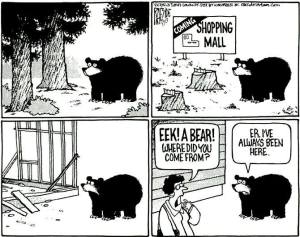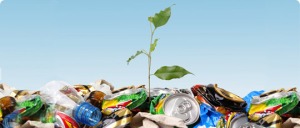A major issue facing modern society is waste management. More simply put, what should we do with the waste we produce? A growing emphasis has been placed on the three R’s: Reduce, Reuse, and Recycle. Composting provides a means of accomplishing all three of the R’s. Through composting the amount of garbage sent to the landfill is reduced, the organic matter is reused rather than dumped, and it is recycled into a useful soil amendment.
Natural ecosystems have a proven method of breaking down organic materials into a useful end-product: the decomposers found within the food chain break down nature’s organic waste and turn it into humus, the organic component of soil.
Composting is a way of harnessing the natural process of decomposition to speed up the decay of waste. The history of composting dates back to the history of early agriculture. Many find that composting is as much of an art as a science. Recent concern about managing wastes and producing food in an environmentally sound manner has led to a renewed interest in small-scale, backyard composting as well as an interest in developing large-scale, commercial and municipal composting systems.
Designing successful composting systems requires an understanding of certain biological, chemical, and physical processes such as the movement of air, uptake of carbon and nitrogen, and heat production and transfer.
Ecolife provides environmentally sustainable and cost effective organic waste management technologies. Ecolife provides design, equipment and commissioning for composting projects. The composting technologies promoted by Ecolife provides an environmentally sustainable solution to the organic waste problem faced in many countries. It is an environmentally sustainable solution in that it reduces the amount of waste going to landfill, processes this waste without polluting the soil, air or water, and provides an stable organic product that can be used to improve soil productivity and increase plant production. The nutrients in the compost and fertilizer products that are produced reduce the dependence on chemical fertilizer.

Ecolife Biodegradable
Ecolife composting technologies are climate change friendly achieved by reducing methane emission from landfills through diversion of the organic waste that would otherwise produce methane. The recycling of nutrients required by plants decreases the dependency on chemical fertilizers, the production of which is an energy intensive process..

 ials, combining amazing functionality and very low production costs. Its use has increased 20-fold in the past 50 years and is expected to double again in the next 20 years.
ials, combining amazing functionality and very low production costs. Its use has increased 20-fold in the past 50 years and is expected to double again in the next 20 years.








